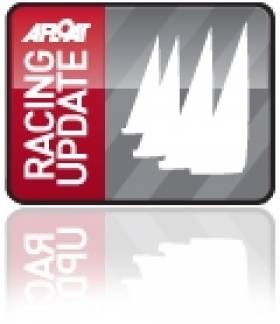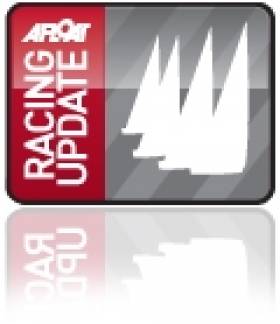Displaying items by tag: International One Metre Class
#modelboats – The IOM or International One Metre model boat class is truly international. At more than one level writes Gilbert Louis.
With fleets on all continents across multiple countries: New Zealand, Australia, South Africa, Argentina, Brazil, Malta, the UK, the US, Israel and a number of European and Scandinavian countries to name a few.
In total 26 National Class Association (NCA) are registered to the International Class Association (ICA) and of which 20 countries had skippers representing them at the 2014 European Championships in September.
Australia, Croatia, the US and the UK, France, Spain, Italy, the Netherlands have well established big fleets for sure, while others have smaller fleets like Malta, Ireland without forgetting emerging ones like Israel, Chile. So we have a good mix of representation across the world.
In fact the IOM is probably the most sailed boats in the world as not everyone is into racing. A lot of people would pick IOM boats because of their attractive size (which allows them to be easily packed in any car and are quickly ready for sail), their class rules (open enough to allow people to design, build and race their creation if they want and yet be competitive due to the class limitation), their popularity as stated in previous paragraphs and because they do react quite like full size boats too.
The other dimension of the IOM's truly international status is simply the boat itself. Looking at my boat for example, most of the parts are coming from various locations in the world. You can also get it all from one supplier but in Ireland we don't have any so we source our parts elsewhere.
My boat was designed in Australia by Frank Russell, built by Neil Suitor in Northern Ireland, sailed by me in Ireland, the sails come from New Zealand and Australia, the masts from France, the Winch from Australia, the booms and ball–bearing goosenecks from the UK, fittings (mix from the UK, France, Italy and the US), the appendices and the bulb come from the UK, the rudder servo bought from Germany, batteries from Hong-Kong.
You may think wow what a headache to find the right parts you are looking for with all this. Well no because I am quite picky with what I want to use on my boat. You can simply order all the parts from one providers. Most of the big providers will have all the parts needed so then after that it comes to personal preferences. I have listed them in our class site www.iomireland.org for your convenience.
But sure half the fun in model activity is building it yourself or customising it to make it unique to you. Trying new stuff, modifying it so it suits your setup, etc... it's all part of the fun !
Even the Irish IOM fleet itself a mix of French (your scribe), Irish sailors of course and now a new skipper from Sweden who recently joined us.
Model Boat Racers Ask the Question: 'To Chine or not to Chine?'
#modelboat – The model boat classes have been experimenting with chines for a while now. We have seen a new trend over the recent years in boat designs. This new wave came from the racing boats, TP52, VOR70, and recently making its way to the cruiser racer designs like the new X boats or Malango to name a few. The funny thing is that not until recently chined boats were still built by amateur builders as they are easier to build. Yet now we are coming back to them, the 10R, A class, Marblehead and also the One Metre class are now coming out with chine.
The IOM or International One Metre Class operates under a box rules format. This, in a nutshell, allows for a relatively open format to boat designs but the rules on the number of rigs and their dimensions are very stricts.
This ensures close racing as we have seen over the years. For the past couple of years the arrival of chines on boat design increased the performance of these boats a notch up. However there are still many debates about the chine and its effect on performance. From what I have seen and tested so far, I can give 3 advantages of the chine design over rounded hulls:
1- the chine helps the boat to accelerate that bit quicker after a tack.
2- It allows to track nicely on the beat versus a rounded hull that would "slide" more as it heels in the gusts.
3- it helps the boat to get planning that little bit earlier and longer on the run
there is a 4th point often discussed within the class. That boats with chines tend to nose dive less in the gusts and accelerate more. I agree to some extend as in my opinion this is primaliry due to more volume in the forward section, complemented by a higher radius of the foredeck to help the come up should it nose dive. I am not of the view that the chine helps here, and the proof is that Brad Gibson who made the most successful chine design, did design another boat before called the SKA which goes well downwind and has no chine.
See the pictures attached to see the difference in designs and even amongst the chined boats, its length, position and angle varies across the design range.
So does that means that rounded boats are passed their due date ? No not at all, not later than a month ago I won an event in Scotland with my 2006 V6 which has a rounded hull, ahead of newer chined boats. There are many other rounded hulls that are at least as successful like the Obsession, the V7 to name a few.
There is it seems a "fashion" trend to go and get a chined boat, but like any other sailing class you can focus on the little things and miss on the big picture. Like getting the tuning of the boat wrong, opting for the wrong rig, an electric failure, a bad start, seaweed in the keel, a wrong tack, overstanding a mark, and the list goes on. One has more to lose in doing any of these errors than not getting a chined boat.


























































